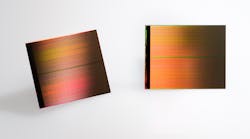Micron to Halt Development of 3D XPoint, Sell Flash Memory Fab
Micron Technology is tightening up its strategy in the data center market, halting development of its 3D XPoint memory to focus on other memory and storage improvements for servers.
Micron, the largest US manufacturer of memory chips, sells short-term DRAM and long-term NAND flash memory chips used in areas including smartphones to the data centers behind the cloud. But the company said it would no longer invest in the 3D XPoint technlogy co-developed with Intel since 2015 to have higher capacity than DRAM and higher speeds than NAND flash.
The semiconductor giant said there was not enough demand for memory chips based on 3D XPoint to be worth the investment, while other new technologies are showing more promise.
Micron said it is also in discussions with “several potential buyers” to sell its production plant in Lehi, Utah, where it manufactures 3D XPoint and NAND flash. The fab was the headquarters of the Micron-Intel joint venture IM Flash Technologies (IMFT), which was established a decade and a half ago. The company hopes to complete a sale for the plant before the end of 2021.
Micron said that instead it would boost its investments in memory chips that use "Compute Express Link" or CXL, the industry standard interface introduced by Intel and based on the PCIe Gen 5 bus to reduce bottlenecks in data centers. The protocol serves as an interconnect for the central processing chip (CPU) in the server to communicate to DRAM and NAND products.
Micron's retreat puts 3D XPoint memory at a crossroads. While Intel is betting big on 3D XPoint with its Optane persistent memory and NVMe SSDs, Micron is exiting the business altogether.
“We believe this shift will better address our customers’ needs and, importantly, improve returns for our shareholders,” said Micron's CEO Sanjay Mehrotra in a conference call with investors and analysts. “The knowledge, experience and intellectual property gained in this effort will give us a head start on several important products that we will introduce in the upcoming years," he said.
When Micron and Intel introduced 3D XPoint memory in 2015, they called it a completely new category of memory that could be up to 1000 times faster than NAND flash, while storing up to 10 times more data than DRAM at a lower cost. The XPoint technology is a class of phase change memory that tightly stacks thin columns of memory cells in a 3D crosshatch pattern.
Intel and Micron started to unravel their partnership in January 2018, splitting up on 3D NAND flash development. Then, in July 2018, the companies agreed to independently fund any future generations of the 3D XPoint technology. In 2019, Micron exercised its right to buy out Intel's share in IM Flash Technologies—and the only production plant in the world equipped to mass produce 3D XPoint chips—for a total of $1.5 billion. It also assumed around $1 billion in debt.
As a result of the agreement, Intel has been forced to contract out the production of the 3D XPoint chips at the heart of its Optane nonvolatile memory and storage products to Micron.
Last year, Intel said its Optane persistent memory chips are currently in use at more than 475 customers, including Google and Microsoft. But demand has hit a wall. Micron is not even using the full production capacity at its fab to fill Intel's orders for 3D XPoint. The company estimates underutilization charges at the plant were hutting its profit by $400 million per year as a result.
“With Micron’s exist from the 3D XPoint business, it leaves Intel as the only provider of this new non-volatile memory technology,"Tom Coughlin, technology analyst and consultant at Coughlin Associates, said. "Intel is using its Optane memory as a performance enhancement for its latest server processors in order to gain a competitive advantage over its competition."
Last year, Intel announced that it would sell its NAND flash memory business, including NAND SSDs, in a deal totaling $9 billion. But at the same time, the Silicon Valley titan said that it would continue to develop its 3D XPoint technology and reinvest the proceeds from the sale in order to fund future generations of Optane, which it has been more or less subsidizing to increase sales.
Micron said its customers in the data center space have different demands for memory chips than 2015, when it introduced 3D XPoint. Evolving workloads have changed the requirements.
As artificial intelligence and other data-heavy workloads proliferate in data centers, CPU-DRAM bandwidth has become a bigger constraint on system-level performance than capacity. Micron plans to invest in CXL over 3D XPoint to reduce these bottlenecks and give its customers more "architectural freedom” to scale with the increasing performance demands in the data center.
The move also allows Micron to focus on its core product portfolio. Micron has started rolling out chips based on what it calls its industry-leading 1-alpha DRAM—which it said delivers a 40% generational leap in memory density and a boost of 15% in power savings—and 176-layer 3D NAND flash—which reduces die area 30% compared to its last generation—technology nodes.
“We have never been in a stronger position with our technology roadmap,” said Sumit Sadana, who oversees the core business units at Micron, including marketing and business operations.
The semiconductor giant said winding down the 3D XPoint business will not change its current and future investment plans in emerging memory technologies. Micron executives said it plans to apply what it learned from development of 3D XPoint, and related engineering resources, to other types of storage-class memory with unique variations of performance, cost and power.
"These new memory solutions could ultimately delay the adoption of 3D XPoint even more and reduce the overall addressable market for the technology," he said, adding that "importantly, our development model for these newer products will be significantly more cost-effective, and we expect a higher ROI for our investments in these new technologies going forward."

